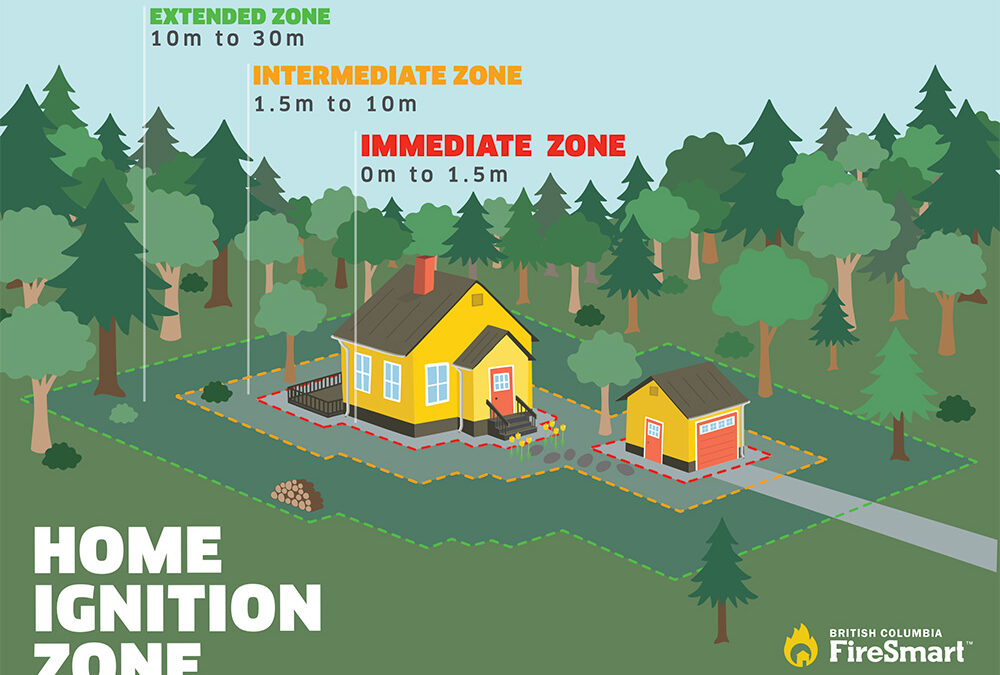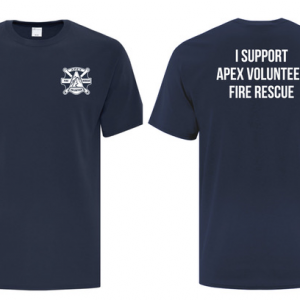The Home Ignition Zone (HIZ) graphic is a critical tool in mitigating the risks of wildfires and preventing damage to homes and properties. It is based on extensive research and experiments which demonstrate that buildings ignite due to the condition of the structure itself and everything around it. The HIZ graphic is divided into three sections: the Immediate Zone (0 to 1.5 metres), the Intermediate Zone (1.5 to 10 metres), and the Extended Zone (10 to 30 metres). These follow the NFPA guidelines and align with the international model for home ignition zones. Each zone requires specific actions to reduce the chance of wildfire damage to your property.
The Immediate Zone
The Immediate Zone is a non-combustible area that starts at the home and extends to a 1.5-meter perimeter around it and its attached structures, like decks. Because this space is the most vulnerable, it is essential to take the following proactive steps to reduce the potential for wind-blown embers to ignite your house:
- Choose non-combustible building materials when constructing or renovating.
- Clear vegetation and combustible material down to mineral soil and cover with non-combustible materials like gravel, brick or concrete.
- Avoid planting woody shrubs or trees. If any are present, prune or maintain them regularly.
The Intermediate Zone
The Intermediate Zone extends from 1.5 to 10 metres from the home. Elements in this section should be managed so that they don’t transmit fire to your house. Take the following actions within the Intermediate Zone to reduce the vulnerability of your property:
- Plant fire-resistant vegetation and select non-combustible landscaping materials.
- Avoid incorporating any woody debris, including mulch.
- Remove combustible items like firewood piles, construction materials, patio furniture, tools, and decorative pieces.
- Move trailers, recreational vehicles, storage sheds, and other combustible structures into the Extended Zone. If that is not possible, store firewood inside your mitigated garage, shed or other ember-resistant structures.
- Create a non-combustible ground cover, like a gravel pad, underneath and 1.5 metres around trailers, recreational vehicles, and sheds.
The Extended Zone
The Extended Zone occurs between 10 to 30 metres from the home. In this area, the goal is to reduce the fire’s intensity and rate of spread. Here are some important steps you should take if your property extends into this zone:
- Selectively remove evergreen trees to create at least 3 metres of horizontal space between the single or grouped tree crowns.
- Remove all branches to a height of 2 metres from the ground.
- Regularly clean up accumulations of fallen branches, dry grass, and needles to eliminate potential surface fuels.
- Continue to apply these principles if your property extends beyond 30 metres.
- Work with your neighbours in overlapping zones and seek guidance from a forest professional if affected by other conditions, like steep slopes.
Using the HIZ graphic and taking the recommended actions within each section will not only help reduce the risk of damage to your property, but also give firefighters a better chance of defending your community. It is best to always start in the Immediate Zone and move outwards away from your structures. Remember, a little effort now can go a long way in protecting you, your loved ones, and your home during a wildfire.


